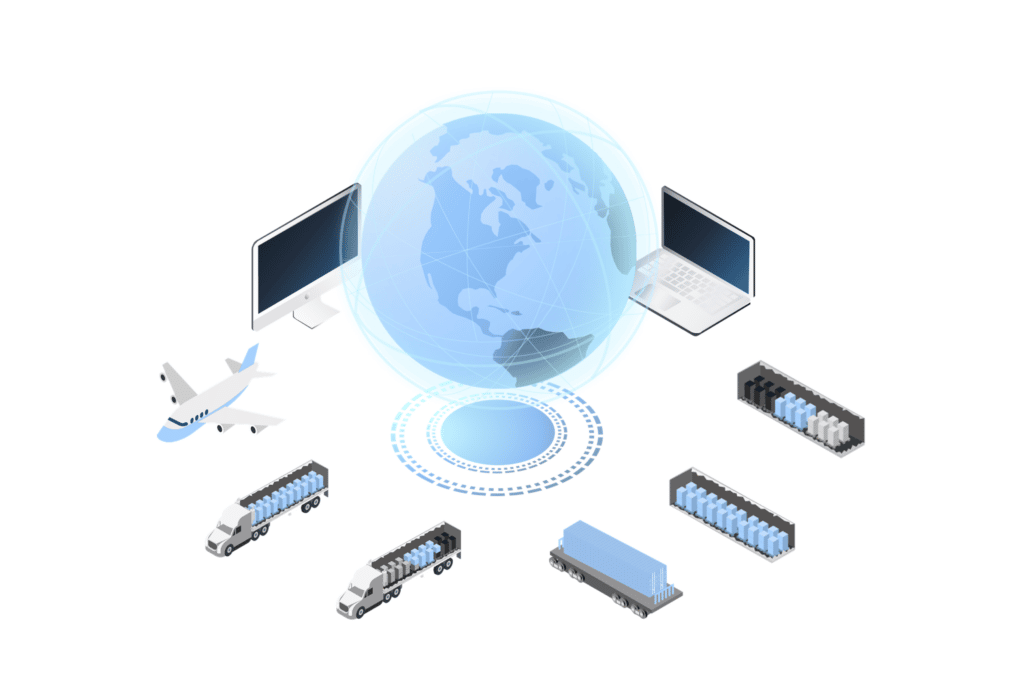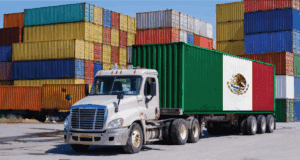In 2018, global trade was valued over $35 trillion and that amount continues to climb. Factors like fewer trade restrictions and ease of access to the internet have made global trade easier than ever before. There are more buyers and sellers in the market, and the competition has made better prices and products. However, it still remains one of the most intricate and complicated endeavors in business. With all of its challenges, global trade has proven to be the backbone of the global economy.
What is Global Trade? Basic Terms and Strategies
Global trade is the exchange of goods or services between countries and is made up of the total imports and exports of each participating nation. It is governed by supply and demand (with occasional government intervention) and relies on that supply and demand to determine the price of each product or service sold. Each nation in the world is made up of assets and natural resources that they can consume or trade to other nations. Some nations choose to specialize in various products and services and have a comparative advantage over other nations. Countries with an absolute advantage on a good or service are the best at producing that good or service and are most likely to export these to other nations. That is how the global economy is formed – trade between nations.
Free Trade
This method is simpler than protectionism – two or more nations can trade with little to no restrictions. Supply and demand factors dictate what products or services are made and sold, and the market determines the rate. Nations in free trade agreements operate efficiently by producing the goods or services they have a comparative advantage with, and trading those products or services to other nations who do not have that advantage. Each country has individual strengths and can capitalize on them to the benefit of everyone in the partnership. Free trade is the natural state of global trade; but when nations wish to sanction other countries for poor behavior, or to protect their own personal economy, nations implement protectionist tendencies.
Protectionism
This is both a strategy and philosophy that regulates global trade to ensure the market performs properly. As stated before, this can be used to punish a nation’s bad actions, protect a nation’s domestic products and services from cheaper imported ones, reduce trade deficits, or promote growth in a particular sector. Some of the main tools used to accomplish these are:
• Tariffs – Taxes on imported goods and services. These are often used for sanctions against bad actors, to prevent product dumping, or to incentivize consumers to purchase domestic products.
• Subsidies – Benefits given to people, businesses, industries, etc. by governments to encourage growth in a particular sector. These can take the form of cash payouts or tax reductions.
• Quotas – Limit the number or value of goods and services a country can import or export during a particular period.
• Embargos – Completely restricts trade from a particular country or of a particular product.
Both strategies pose benefits and challenges to both domestic and global economies. Too much freedom can allow bad actors to operate unchecked, and too much protectionism can stifle trade and cause prices to skyrocket. Most countries operate with a combination of the two polices. Some may sanction particular governments and have free trade with others. Currently, the United States has free trade agreements with 20 countries and has sanctions on many more. Some of the US’s most notably sanctioned nations include countries like China, North Korea, and Russia. It is important before operating in global trade to check with local authorities for import/export licensure and follow their laws and guidelines. (For Import/Export in the US see https://www.usa.gov/import-export)
Top Trade Sectors
The top trade sectors in the global trade market have remained relatively consistent in spite seen significant market fluctuation in the past decade. Entities wishing to trade globally might consider some of these sectors. According to the CIA World Factbook, these are top 10 most traded commodities since 2017.
1. Electrical Machinery – Including Computers (14.8%)
2. Mineral Fuels – (14.4%)
3. Nuclear Reactors – (8.9%)
4. Vehicles – (8.9%)
5. Scientific and Precision Instruments – (3.5%)
6. Plastics – (3.4%)
7. Iron and Steel – (2.7%)
8. Organic Chemicals – (2.6%)
9. Pharmaceutical Products – (2.6%)
10. Precious Stones – (1.9%)
Other significant trade areas include service/labor and intellectual property.
Global markets are similar to current US trade sectors as well. Since 2008, the United States has worked closest with Canada, Mexico, China, and Japan for exports, and since 2017 with the same four and Germany for imports.
The US currently spends nearly $2.361 trillion annually on imports and the top 3 commodities include:
1. Industrial Supplies (32.9%)
2. Consumer Goods (31.8%)
3. Capital Goods (30.4%)
Currently the US is operating at a trade deficit. It earns approximately $1.553 trillion annually and its top 3 exported products include:
1. Capital Goods (49%)
2. Industrial Supplies (26.8%)
3. Consumer Goods (15%)
Advantages and Disadvantages of Global Trade
People or businesses wishing to begin global trade should know that it has significant advantages and disadvantages.
Advantages
• Building blocks for international growth – once a business is able to successfully expand to one foreign market, they increase their likelihood of spreading to others. They can increase brand awareness in the region, spark interest in neighboring countries, and pull the brand into those countries as well.
• Improves financial performance – Most countries offer significant market potential for many products. Expanding globally allows more people to see, evaluate, and purchase products. More exposure often correlates to higher sales.
• Distributes a brand’s or business’s risk – Once again, the more people exposed to a product or service, the better chance to make a sale. Selling to foreign countries increases sales potential and relieves pressure to sell domestically.
• Increases competition – The more sellers in the marketplace, the cheaper and better the products are for the consumer.
Disadvantages
• Political risk – Operating in foreign nations means operating with foreign governments, laws, and customs as well as with potential political unrest. Shifting political climates can often pose disruption to global trade.
• Exchange rate risk – Global currency is constantly shifting value, so product and service values also shift.
• Cultural complications – This can take many forms and can be difficult to anticipate. Some of the major gaffs come from language barriers, physical mannerisms, or religious offenses. These mistakes can be costly if enacted improperly.
• Increases the risk IP theft – Some individuals do not act ethically and will not adhere to US patent law or follow intellectual property protections. Trading globally often exposes companies to copyright and trademark infringement and it is more difficult to combat on foreign soil where laws and customs differ from the US.
The advantages and disadvantages should both be weighed before expanding trade globally. Often, proper planning can mitigate the disadvantages, but each should be seriously considered.
US Trade Agreements
Currently the United States is in Free Trade Agreements with 20 nations and participates in NAFTA (North American Free Trade Agreement). NAFTA was implemented January 1, 1994 and has been one of the nation’s top trade agreements since. The deal virtually eliminated all duties, tariffs, and quantitative restrictions between the United States, Canada, and Mexico. It has chapters concerning:
• Rules of origin
• Customs procedure
• Agriculture
• Government procurement
• Investment
• Trade-in services
• IP protection
• Dispute settlement procedures
Critics of NAFTA, particularly the Trump administration, felt the deal did not do enough to protect American interests. So, in 2017, negotiations began between the North American nations regarding a new trade agreement. They settled the negotiations and signed the deal on November 30, 2018 and formed USMCA.
“USMCA is a great deal for all three countries, solves the many deficiencies and mistakes in NAFTA, greatly opens markets to our farmers and manufacturers, reduces trade barriers to the U.S. and will bring all three Great Nations together in competition with the rest of the world,” says President Trump. Specifically the deal introduces protections for:
• Automobile part production
• Automobile workers
• Dairy farmers
• Wine
• Technology and E-commerce
• Finance
• Regulation/Dispute
Critics of the Trump administration and the USMCA call the deal NAFTA 2.0, but others see it as much needed correction of lax standards. The deal still requires ratification by Congress before it can be enacted as law. Until then, the NAFTA deal still remains in place.
Global trade has been the backbone of the global economy and continues to grow today. There are many advantages and disadvantages associated with it, and many more strategies on what is the best way to do it. As for the United States, it is currently trading freely with a significant portion of the global population and imposes sanctions and tariffs on other parts. It is also trading at a deficit globally, but actions like the new USMCA are attempting to change that. Removing regulations and introducing the internet has made global trade easier and more competitive than ever before.



